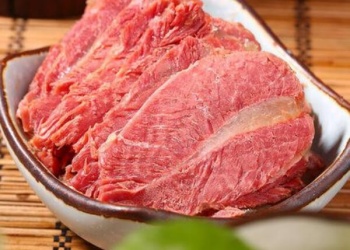A trip to Shanxi, whether it is to enjoy the natural scenery, taste food, experience folk activities, or learn about the history and culture, can be rewarding. Here are some travel guides about Shanxi. Remember to plan your trip well in advance and make the most of your visit to Shanxi.
Exploring Historical and Cultural Relics
Shanxi, this land rich in profound historical and cultural heritage, has been a significant birthplace of the Chinese nation since ancient times. Exploring the historical and cultural relics of Shanxi not only allows us to appreciate the brilliant achievements of ancient civilizations but also enables us to delve deeper into the historical context and cultural deposits of the Chinese nation.
Pingyao Ancient City: As one of the four most intact ancient cities in China, Pingyao Ancient City showcases the wisdom of ancient urban planning and construction through its unique Ming and Qing-style architecture and well-preserved city walls.
Yungang Grottoes: Located in Datong City, the Yungang Grottoes are one of the four major treasure troves of grotto art in China. Here, numerous exquisite Buddha statues and murals are carved, serving as precious materials for studying Buddhist art and ancient social life.
Mount Wutai: As a Buddhist holy site, Mount Wutai boasts numerous ancient temples and pagodas, carrying rich Buddhist cultural traditions. It is a sacred place for spiritual cultivation.
Xuankongsi Temple: Nestled on the cliff of the Jinlong Gorge in Mount Hengshan, the Xuankongsi Temple is renowned for its unique architectural style and perilous location. This temple, a unique product of the integration of Buddhism, Taoism, and Confucianism, embodies the intermingling and coexistence of ancient religious cultures.
Jinci Temple: Located in Jinyuan District, Taiyuan City, Jinci Temple was built to commemorate Tang Shuyu, the founding monarch of the Jin Kingdom. It preserves a large number of ancient buildings, sculptures, and inscriptions, serving as a significant venue for studying Jin culture.
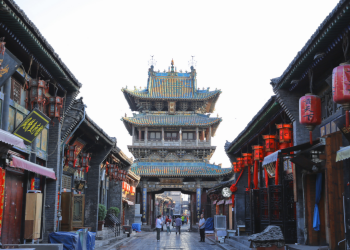
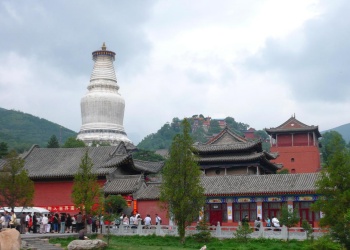
Pingyao Ancient City Mount Wutai
Experiencing Folk Customs in Shanxi
Shanxi’s folk customs are rich and diverse, fully reflecting the profound historical and cultural heritage of this land and the wisdom and creativity of its people. Here are some of the folk customs in Shanxi:
Shehuo: One of the oldest Han ethnic folk cultural activities in Shanxi Province, Shehuo is held during the Lunar New Year or other festivals. Performances include dragon and lion dances, drought boat races, wire walking, acrobatics, shadow puppetry, and more. These activities aim to pray for good weather, abundant crops, national prosperity, and people's well-being, while also demonstrating the diligence and wisdom of the Shanxi people.
Majestic Drum Dance: Originating from the period of Yao and Shun, Majestic Drum Dance is a performance art that integrates music, dance, and skills. During the performance, the drumbeats are as loud as thunder, exuding a wild and unrestrained aura. The cymbals ring out, evoking a profound feeling, and the gongs clang loudly, sounding like a rolling wave. This dance is known as the "Best Drum in the World" for its charm and vitality.
Dough Sculpture: One of the most intricate folk arts in Shanxi, Dough Sculpture involves shaping dough made from flour and other ingredients into various figures such as flowers, birds, fruits, characters, animals, and more. The sculptures are lifelike and brightly colored, serving not only as decorations but also as edible treats.
Paper-cutting: One of the most representative folk arts in Shanxi, Paper-cutting is commonly used to decorate windows, lintels, walls, and other surfaces. The patterns include flowers, birds, characters, animals, mythical stories, and more, exhibiting a rich local style and folk charm.
Shadow Puppetry: One of the oldest forms of opera in Shanxi, Shadow Puppetry involves performing stories using figures made from cowhide or sheepskin projected onto a white screen under a light. The content of shadow puppetry often draws from historical legends, mythical tales, folk stories, and other sources, embodying a strong sense of life and artistic charm.
Lantern Festival: During the Lantern Festival, Shanxi folk culture comes to life with colorful lanterns that symbolize good luck and prosperity. People gather to admire the lanterns, guessing lantern riddles, and set off fireworks, enjoying the joy of the festival.
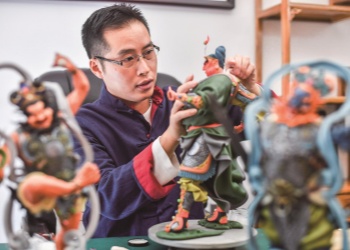

Dough Scuplture Paper-cutting
Explore the natural scenery
The natural scenery in Shanxi is equally enchanting. Here, you can appreciate the unique beauty of Shanxi's landscapes and feel the tranquility and harmony of nature.
The Hukou Waterfall is renowned for its majestic momentum and spectacular scenery. Standing before the waterfall, you can sense the heroism and grandeur of the Yellow River's water, which seems to come from the heavens and rushes endlessly towards the sea. Especially during the rainy season, the waterfall is full of water, with a deafening roar and misty vapors, making you feel like you’re in a hazy fairyland. Sunlight shines through the mist, creating dazzling rainbows that complement the roaring waterfall, creating a breathtaking scene.
The Taihang Mountain Grand Canyon is famous for its deep, steep, and diverse natural landscapes. Inside the canyon, steep peaks, dense forests, babbling streams, and tumbling waterfalls abound. Walking through the canyon feels like entering a mysterious world, where every step reveals a discovery. Especially during autumn, the canyon's flowing water is contrasted by the fiery red leaves of the mountains, creating vibrant and captivating scenes that make people reluctant to leave.
Wangmang Ling is known for its lofty and precipitous terrain and its stunning sea of clouds. The area features strategically located, undulating mountain ranges and swirling mists. From the ridge, you can enjoy a panoramic view of the entire Central Plains, expanding your horizons and clearing your mind. One of the main attractions of Wangmang Ling is the sea of clouds. When the clouds rise, the entire ridge appears to be enveloped in mist, resembling a fairyland. Under the sun’s rays, the sea of clouds showcases a rainbow of colors, creating a breathtaking spectacle.
Tongtian Gorge is famous for its stunning and majestic beauty. It combines the delicate charm of Jiangnan with the grandeur of the north. Inside the gorge, you'll find tall mountains, serene lakes, deep pools, cascading waterfalls, and babbling streams, all contributing to its exquisite scenery. The cliffs and rushing waterfalls on both sides of the gorge further enhance its majestic atmosphere. Additionally, the gorge is rich in historical and cultural significance as well as geological wonders, allowing visitors to appreciate the natural scenery while experiencing the profound historical and cultural heritage.

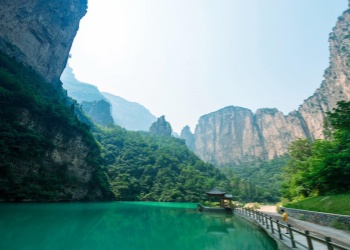
The Hukou Waterfall The Tongtian Gorge
Visiting the Yungang Grottoes
Visiting the Yungang Grottoes is a significant experience for delving into the ancient Chinese grotto art, history, and culture. Here are some tips and suggestions for visiting the Yungang Grottoes:
Understand the Background of the Grottoes: Before your visit, it is advisable to research the historical background, excavation timeline, and stylistic features of the Yungang Grottoes. This will help you better appreciate and understand the artistic value and historical significance of these millennia-old grottoes.
Choose the Right Route: The Yungang Grottoes offer two main tour routes, the East Route and the West Route. You can choose the route that suits your interests and time schedule.
Follow the Rules of the Scenic Area: During your visit, please abide by the regulations of the scenic area. Do not touch or climb on the grotto murals and sculptures to avoid damaging these precious cultural relics. Additionally, respect the local customs and religious beliefs.
Check the Opening Hours: Make sure to inquire about the opening hours of the Yungang Grottoes in advance to plan your itinerary accordingly. Generally, the grottoes are open in the morning and afternoon, but the specific times may vary depending on the season and holidays.
Take Photos for Memories: Feel free to capture some photos during your visit to commemorate your experience. However, please avoid using flashlights or tripods, as they may damage the cultural relics.
Appreciate the Cultural Connotations: While admiring the grotto art, also take the time to appreciate the cultural connotations behind them. For instance, the unique stone carving style of the Yungang Grottoes reflects the aesthetic values and cultural characteristics of different historical periods.
Visiting the Yungang Grottoes is not only a visual feast but also a spiritual purification. Here, you can sense the wisdom and talent of ancient artisans and appreciate the vastness and depth of Chinese culture.
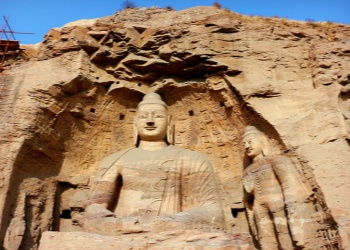
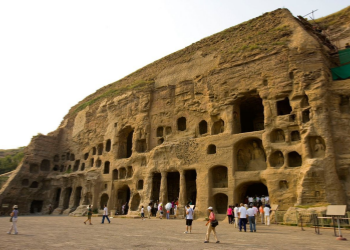
Best self-drive tour route in Shanxi
The best self-drive routes in Shanxi cover 3,100 kilometers and require approximately one month to complete. Depending on individual interests and travel time, suitable routes can be selected. Here are some common self-drive routes in Shanxi:
Shanxi Loop Self-drive Route: This route takes you to the most famous scenic spots in Shanxi Province, covering approximately 1,300 kilometers. Starting from Taiyuan, you will pass through Datong, Pingyao, Jincheng, Linfen, and Yuncheng, ending at Huanghe Laoniu Bay. Along the way, you can admire the grandeur of the Yungang Grottoes, the charm of Pingyao Ancient City, and the magnificent Hukou Waterfall.
World Heritage Self-drive Route: If you are interested in world cultural heritage sites, this route will be your top choice. Starting from Taiyuan, you will travel through Datong, Pingyao, and Jincheng, and ultimately arrive at Huamen Scenic Area in Linfen. On this route, you will be able to appreciate the splendor of world cultural heritage sites such as Pingyao Ancient City and the Merchant Mansions up close.
Shanxi Mansion Self-drive Route: This route will take you to experience the Jin Merchant culture of Shanxi Province, covering a total distance of approximately 600 kilometers. Starting from Taiyuan, you will pass through Qixian, Taigu, Lingshi, and other cultural centers of the Jin Merchants, ultimately arriving at Pingyao Ancient City. Here, you can immerse yourself in the glorious history and unique culture of the Jin Merchants.
Taihang Mountain Cliff Road Self-drive Route: If you enjoy challenging and exciting driving experiences, the Taihang Mountain Cliff Road will be an ideal choice. This route covers approximately 400 kilometers, and along the way, you will traverse the majestic Taihang Mountains, feeling the wonders of nature created by nature's own hands.
Yellow River Bank Self-drive Route: The scenery along the Yellow River in Shanxi is also breathtaking. This route will take you to experience the grandeur of the Yellow River and the folk customs of Shanxi. Starting from Taiyuan, you will follow the Yellow River southward, admiring the magnificent Hukou Waterfall, the tranquility of Laoniu Bay, and the rural scenery along the way.
In addition to these main self-drive routes, Shanxi has many other worthwhile scenic spots and routes. You can arrange your itinerary based on your interests and travel time, enjoying the scenic beauty and rich culture. When planning your self-drive route, it is recommended to learn about road conditions, weather, and accommodation and dining facilities along the way in advance to ensure a smooth and safe journey. At the same time, follow traffic rules, drive safely, and enjoy a pleasant self-drive trip.


Shanxi mountain climbing tour guide
The hiking trip in Shanxi is a challenging and enjoyable travel experience that allows you to appreciate the province's rich natural scenery and profound cultural heritage. Here are some recommended mountains in Shanxi and some essential notes to consider when hiking.
I. Recommended Mountains
Mount Wutai: One of the Four Famous Buddhist Mountains in China, Mount Wutai boasts numerous temples and pagodas with a long history. Its unique religious culture and magnificent natural scenery attract countless tourists. During the hike, you can admire the beautiful combination of the temples' solemnity and the mountains' grandeur.
Mount Heng: One of the Five Great Mountains, Mount Heng is renowned for its steep terrain and scenic beauty. The mountainous landscape of Mount Heng is charming, with abundant historical relics and cultural depths. Reaching the summit of Mount Heng, you can overlook the magnificent scenery of the entire mountain range and feel the grandeur and mystery of nature.
North Wudang Mountain: Located in the middle section of the Luliang Mountains, it is one of the sacred places of Taoism. North Wudang Mountain is famous for its majestic and picturesque scenery, with towering pines and cypresses and towering peaks. During the hike, you can experience the unique charm of Taoist culture while admiring the magnificent natural scenery.
II. Notes on Hiking
Safety First: Safety should always be the top priority during hiking. Choose a route suitable for your physical strength and experience, and avoid taking risks on overly difficult trails. Additionally, abide by the regulations of the scenic area and refrain from entering unrestricted areas.
Thorough Preparation: Prepare thoroughly before heading out. Carry sufficient food and water, as well as necessary equipment such as hiking shoes, gloves, helmets, and ropes. Additionally, dress appropriately according to the weather conditions to adapt to the changing climate in the mountains.
Environmental Protection: During the hike, protect the environment by not littering and preserving the natural surroundings. Respect local customs and religious beliefs, and avoid damaging cultural relics and historical sites.
Hike in a Group: It is recommended to hike with others. This way, you can provide mutual assistance and support in case of any issues. It also adds to the fun and enriches the hiking experience.
Attention to Physical Condition: Hiking is a physically demanding activity. Keep an eye on your physical condition and take appropriate breaks or descend if you feel uncomfortable or exhausted.

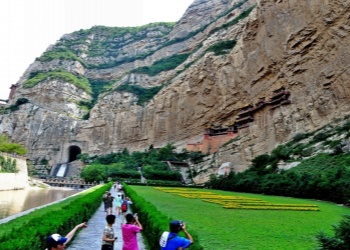
Shopping
During your trip to Shanxi, it's worth considering purchasing some local specialties as souvenirs, such as Shanxi aged vinegar, paper-cutting artworks, embroidery, and more. These unique products not only embody rich cultural connotations but also make excellent gifts.
Qinzhou Yellow Millet: Originating from Qin County in Shanxi, this millet is renowned for its golden hue, full grains, and fragrant, sticky texture. Nutritious and delicious, it's the perfect choice for cooking porridge or meals, and also an excellent gift option.
Shanxi Aged Vinegar: Famous for its unique brewing process and rich flavor, Shanxi aged vinegar boasts a deep red hue, mellow taste, and distinct vinegar aroma with a lingering sweetness. It's an ideal condiment for cooking and seasoning.
Pingyao Beef: A signature delicacy from Pingyao County in Shanxi, Pingyao beef is made from high-quality yellow cattle through a special curing and cooking process. Its tender meat and rich flavor make it a unique Shanxi treat.
Taigu Cake: A popular snack from Taigu County in Shanxi, Taigu cake is widely loved for its sweet and delicious taste, as well as its crisp yet moderate texture. Made from quality ingredients like flour, sugar, and sesame, it's a must-have snack for travelers.
Shanxi Red Dates: Shanxi boasts a diverse range of red dates, known for their fleshy texture and sweet taste. These dates can be eaten directly or used to make candied dates, date paste, and other delicious treats, making them a great choice for healthy snacking.
When shopping in Shanxi, you can choose to purchase these specialties at local specialty stores, supermarkets, or farmers' markets. Alternatively, you can also opt for convenient online purchases through e-commerce platforms. Regardless of the purchase method, it's important to ensure you're buying authentic Shanxi specialties from reputable sources.
